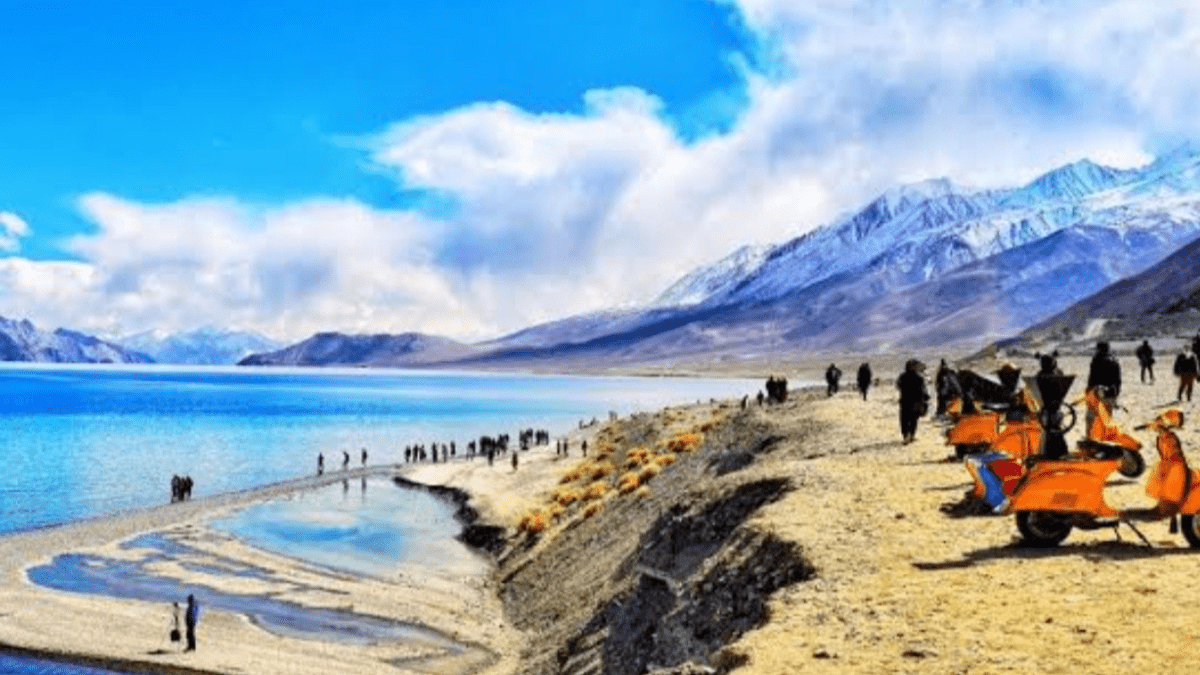Everything you need to know about the ideal time to travel to Ladakh, whether you’re searching for elusive snow leopards or summer trekking.
Every season offers something different from the captivating landscapes of Ladakh, and the way you arrange your vacation can greatly impact your experience. A journey to Ladakh will need some planning, whether your goals are to see the snow leopard, travel through verdant valleys, see Leh, or see spring blossoms. Everything you need to know about the ideal time to visit Ladakh is right here.
What time of year is ideal to travel to Ladakh?
Summer is the finest season to visit Ladakh. Ladakh’s peak season runs from April to mid-September, when temperatures are at their highest.
By early April, the Srinagar-Leh roadway is available to traffic, and the snow usually melts. It’s advisable to fly in, though, if you’re traveling between April and June, as not all roads are operational at this time.
With temperate temperatures and open roads, summer is the ideal season to visit Leh, the Nubra Valley, and high-altitude lakes like Pangong Tso and Tso Moriri. Additionally, now is the ideal season to travel to Ladakh for treks such as the Markha and Sham Valley treks. In Ladakh, April is when apricot blossoms bloom, and it’s also a great time to go birdwatching and see wildflowers.
The Ideal time to take a road trip to Ladakh is from June to September. June is the finest season to go on bike tours in the area because all the roads and passes in the area have cleared by then, including the Manali road that runs along the Rohtang Pass. Ladakh’s lakes get covered in a layer of ice when winter arrives. There is only plane travel to the area due to its frequent snowfall.
Due to its location in a rain shadow, Ladakh does not see a strong monsoon. Even in the summer and winter, expect sporadic showers, with rainfall peaking around August.
When does Ladakh get snow?
When winter arrives and the temperature drops in Ladakh, snowfall usually starts in October and lasts until late March. Throughout the year, Khardung La and other high-altitude crossings may get sporadic snowfall. For up-to-date information, it’s advisable to monitor the local weather forecast if you want to visit during the winter season.
When in Ladakh is the ideal time to see snow leopards?
Although Ladakh’s winters are severe, with lows as low as -11°C, they are also the best times to see the elusive snow leopard. Although the ideal months to see snow leopards are November through April, naturalist and tour guide Payal Mehta, who frequently conducts snow leopard trips in Hemis National Park, suggests avoiding the bitterly cold months from mid-December until late January.
When is the best time to visit Ladakh on a budget?
In Ladakh, the severe winter months constitute the off-season, when accommodation and airfare costs are at their lowest. Traveling to Ladakh during the dead of winter, from December to February, is not recommended. Numerous highways and passes are closed or obstructed as a result of the heavy snowfall and extremely high temperatures. Leh Airport is open all year round, but during this period there may be flight cancellations and diversions.
How many days is a trip to Ladakh enough?
Considering the travel time and acclimatization, a journey to Ladakh should last between seven and ten days. No matter when you go, allow two to three days for your body to adjust to the elevated altitude at your lodging.
Altitude sickness can result from neglecting this step because Ladakh is 3,000 meters above sea level. Once you’ve adjusted, you can spend five or more days exploring the area if your trip is scheduled for seven to ten days. With the exception of the three-day, beginner-friendly Sham Valley Trek, most treks in the area endure five to ten days. Beyond treks and wildlife, the area has much to offer, such as luxurious tents and homestays, a dark sky reserve for astronomy, and mouthwatering local cuisine.
